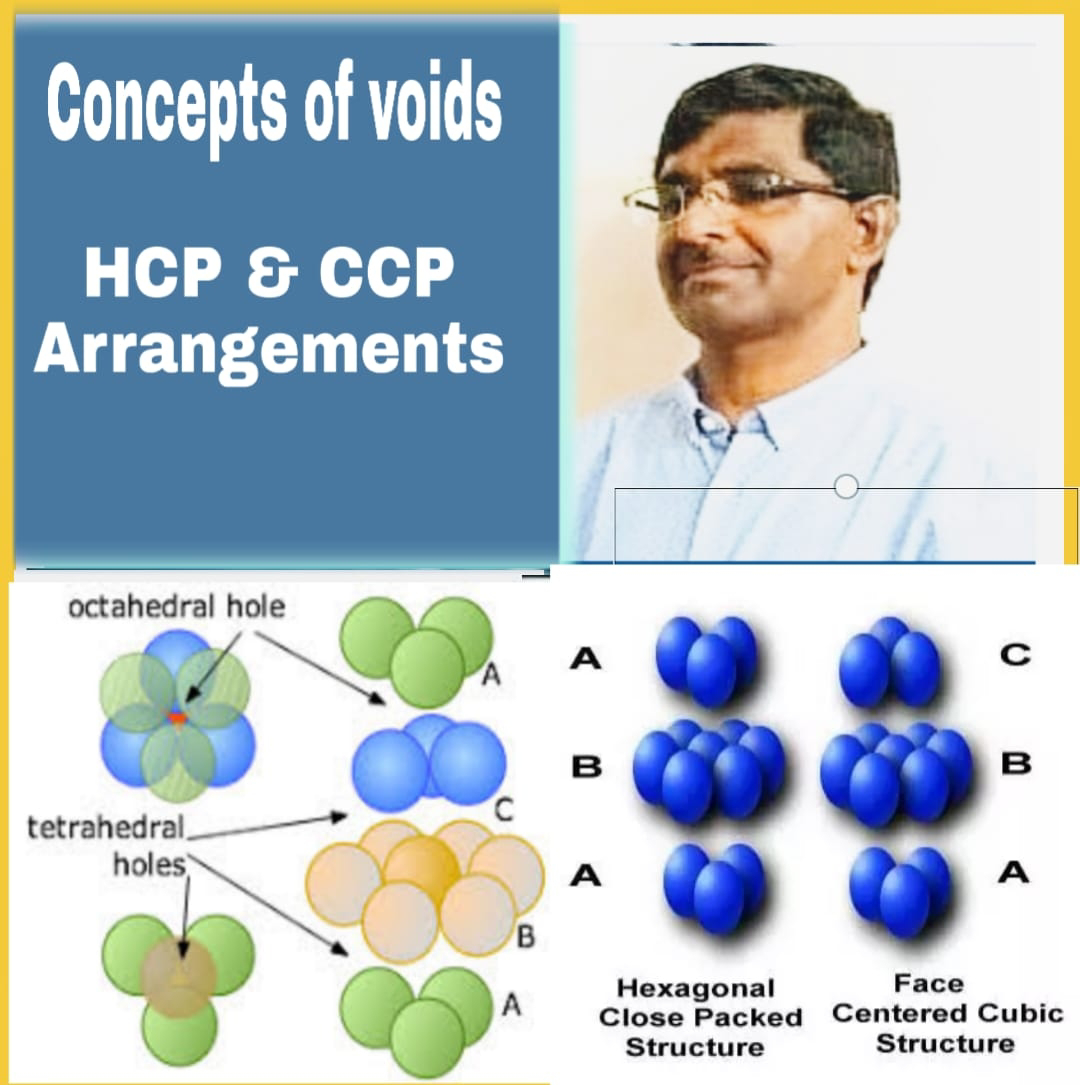Solid State and Chemical Crystallography
The Solid State Unit 1
Introduction-
A solid is defined as that form of matter which possesses rigidity and hence possesses definite shape and definite volume. Unlike gases and liquids in which the molecules are free to move about and hence constitute fluid state, in a solid the constituent particles are not free to move but oscillate about their fixed positions.
Classification of solids-
Solids are classified into two types, namely crystalline and amorphous.
(1)Crystalline solids-
A solid is said to be crystalline if the various constituent particles like atoms, ions or molecules are arranged in definite geometrical patterns within the solids. In other words they are said to possesses long range order. Example- All solid elements and compounds exits in this form.
Crystalline solids possess following properties-
(i) They have definite geometrical shape.
(ii)They have sharp melting point.
(iii)They are rigid and their shape is not distorted by mild distorting forces.
(iv)They are anisotropic i.e. their some of the physical properties are different in different directions.
(v) Crystalline solids may be ionic, covalent, molecular and metallic.
(2)Amorphous solids-
A solid is said to be amorphous if the constituent particles like atoms , ions and molecules are not arranged in any regular fashion. In other words they may have short range order .Example- glass, plastics, polymers and amorphous silica.
Amorphous solids possess following properties-
(i)These solids do not have definite geometrical shapes.
(ii) They do not have sharp melting points.
(iii) They are not rigid and their shapes can be distorted easily.
(iv) They are isotropic i.e. their some of the properties are same in all the directions.
(v)They are not solid, they are actually super cooled liquids.
Classification of solids-
Solids are broadly classified on the following two bases-
(1) On the basis of inter particle force
(2) On the basis of geometrical considerations.
(1)Classification on the basis of inter particle force-
Depending upon the nature of bonding the crystalline solids have been classified into four types-
(A)Ionic solids-
The constituent units of the ionic crystals are charged ions .These positively charged cations and negatively charged anions are arranged in a regular pattern. A strong electrostatic force of attraction exists between these ions which help to hold them together.
Examples- NaCl, KCl, NaNO3, LiF, Na2SO4 etc.
Properties of ionic solids (ionic solids)-
(i) Mp’s,BP’s and heat of fusion of these crystals are high
(ii) In solid state these are bad conductor but in fused or dissolve state these are good conductor of electricity.
(iii) They are soluble in polar solvent like water but are insoluble in non polar (organic) solvent.
(iv)Due to high heat of vaporization these are non volatile. (v) These crystals are hard and brital.
(B) Molecular solids-
The constituent units of molecular crystals are molecules. These molecules are held together by weak vanderwaal’s forces of attraction. The constituents of these crystals may be polar or non polar
Example-
(i) Polar molecular crystals-
ice ,solid HF ,solid HCl etc.
(ii) Non polar molecular crystals- I2, P4, S8, solid SO2, wax etc.
Properties of molecular solids (crystals)-
(i) Molecular crystals are soft and have low mp.
(ii) Heat of vapouration of molecular crystals is very low.
(iii) They may be polar or non polar.
(iv)They are made up of molecules (v) They are bad conductor of electricity.
▪ An interesting feature of molecular crystals is that the constituent may be polar or non polar .Therefore the nature of vanderwaal’s forces differs.
▪ Intermolecular forces also called vanderwaal’s forces are of following four types-
(i) Ion-dipole force
(ii) Dipole-dipole force
(iii) London-dispersion force
(iv) Hydrogen –bonding
▪ Molecular solids containing non polar molecule the attractive forces are vanderwaal’s forces also called London forces. On the other hand molecular crystals having polar molecule the attractive forces are ion –dipole or dipole-dipole forces
(C)Covalent solids (crystal)-
The constituent units of covalent crystals are atoms .These atoms are held together by strong covalent force (bond).These crystals are also called network crystals.
Example: Diamond, silica and carborandum.
Properties of covalent crystals-
(i) These are made up of atoms, which held together by covalent bonds.
(ii) Due to strong covalent force these crystals are hard.
(iii) These crystals have high mp and high heat of fusion.
(iv)These are bad conductor of electricity.
(D)Metallic solids (crystal)-
The constituent units of metallic crystals are positively charged metallic ions (called kernals) and mobile electrons dispersed in a electron gas. Metallic bond exists between electrons and metallic ions.
Example- All metals and alloys.
Properties of metallic crystals-
(i) They are made up of metallic ions.
(ii) Metallic bond exists between metallic ions and moving electrons.
(iii) Due to movement of free electrons metallic solids are good conductor of electricity
(iv) These are malleable, ductile having metallic lusture.



